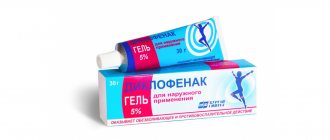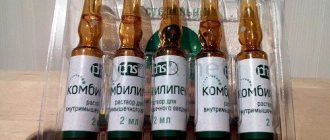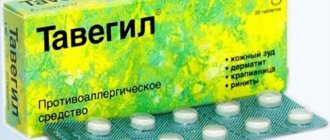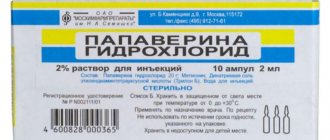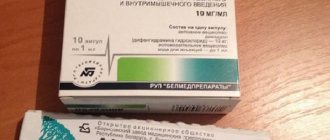Design Features
- Due to the presence of a long catheter, the product has many advantages and is indispensable when carrying out a number of procedures on children.
- Made from thin medical steel, it is durable with minimal thickness.
- Butterfly needles vary in color and size, and international color coding is used.
- Triple sharpening for virtually painless insertion into the skin. Treating metal with silicone minimizes skin injury.
- The needle is called “butterfly”, thanks to the wing-shaped fixation device for strong and reliable fastening of the catheter. The design feature prevents spontaneous extraction.
- The drug is administered and blood is taken through transparent plastic tubes that can withstand kinks.
The butterfly needle complies with GOST, has a transparent tube made of medical polyvinyl chloride with a length of 18 to 30 cm, which allows operations to be carried out far from the venipuncture area - the risk of needle dislocation and damage to the vein is reduced. On one side there is a Luer or Luer-Lock connection with a cap. On the other, a catheter is placed for insertion into a vein.
The size range of products ensured the widespread use of butterfly needles. Products are selected depending on the characteristics of the vein, the density and viscosity of the injected drug. Color coding, in accordance with the ISO standard, is applied to the wings. It’s easy to determine the size by color and choose the right device.
| Code | Color code | Needle size | Needle diameter | Catheter length |
| IMPROVACUTER STANDARD TYPE BUTTERFLY NEEDLES | ||||
| 594121190 | Butterfly needle Improvacuter 21G 3.4″ standard type | 0.8 mm | 190 mm | |
| 594121300 | Butterfly needle Improvacuter 21G 3.4″ standard type | 0.8 mm | 300 mm | |
| 594122190 | Butterfly needle Improvacuter 22G 3.4″ standard type | 0.7 mm | 190 mm | |
| 594122300 | Butterfly needle Improvacuter 22G 3.4″ standard type | 0.7 mm | 300 mm | |
| 594123190 | Butterfly needle Improvacuter 23G 3.4″ standard type | 0.6 mm | 190 mm | |
| 594123300 | Butterfly needle Improvacuter 23G 3.4″ standard type | 0.6 mm | 300 mm | |
| 594124190 | Butterfly needle Improvacuter 24G 3.4″ standard type | 0.55 mm | 190 mm | |
| 594124300 | Butterfly needle Improvacuter 24G 3.4″ standard type | 0.55 mm | 300 mm | |
| 594125190 | Butterfly needle Improvacuter 25G 3.4″ standard type | 0.4 mm | 190 mm | |
| 594125300 | Butterfly needle Improvacuter 25G 3.4″ standard type | 0.4 mm | 300 mm | |
| LIND-VAC STANDARD TYPE BUTTERFLY NEEDLES | ||||
| SN2007 | Butterfly needle Lind-Vac 20G 3/4″ x 7″ standard type | 0.9 mm | 190 mm | |
| SN2107 | Lind-Vac butterfly needle 21G 3/4″ x 7″ standard type | 0.8 mm | 190 mm | |
| SN2207 | Lind-Vac butterfly needle 22G 3/4″ x 7″ standard type | 0.7 mm | 190 mm | |
| SN2307 | Lind-Vac butterfly needle 23G 3/4″ x 7″ standard type | 0.6 mm | 190 mm | |
| SN2407 | Lind-Vac butterfly needle 24G 3/4″ x 7″ standard type | 0.55 mm | 190 mm | |
| SN2507 | Butterfly needle Lind-Vac 25G 3/4″ x 7″ standard type | 0.5 mm | 190 mm | |
The indication for use is the impossibility of administering drugs into central and peripheral veins. The device is used for short-term puncture – up to 6 hours – and intravenous infusions. See the instructions for how to use a butterfly needle.
What you need to know about the needle butterfly?
A butterfly needle is a standard medical needle that has a catheter attached to it. In practice, only two types of needles are used - hollow and surgical. "Butterfly" belongs to the first category. It can be used to perform injections, collect/transfer samples and biological samples. Most often, the needle is used to collect venous blood in children and patients with thin veins. The tubes are made of austenitic stainless steel of one of the types specified in the relevant state documentation.
The production of medical instruments is strictly regulated by the state to ensure maximum safety and quality. The needles themselves are used in pediatrics, some intensive care units, veterinary medicine and gerontology (the science of aging of all living organisms).
Content:
- What you need to know about the needle butterfly?
- What is a luer adapter?
- Advantages and disadvantages of medical instruments
A catheter is a medical instrument in the form of a tube, with the help of which the vessels are connected to the external environment for subsequent emptying. A soft catheter is attached to the butterfly needle. It is made of plastic materials such as plasticized polyvinyl chloride or rubber. For the “butterfly”, vascular catheters with a venous cannula are used. A cannula is a hollow soft tube that is inserted into the internal cavity of the human body. The catheter allows not only blood sampling, but also the introduction of drugs into the bloodstream or detoxification.
Absolutely all catheters require additional fixation.
They are attached to the skin with patches, suture material or special fasteners. The cannula is equipped with a flexible retainer (made of lightly colored polyethylene), which visually resembles the wings of a butterfly. Because of this similarity, the instrument got its name. The color of the retainer is not chosen for ethical reasons, but to indicate the size of the needle. Size range of needles: 18, 19, 21, 22, 23, 25, 27. Each number is assigned a specific shade of the palette, which helps doctors and nurses quickly navigate the instruments. To avoid confusion, the needle size is marked on the wings of the fixator and is additionally indicated on the sterile individual packaging. Specifications
| Size(G) | Fixative shade | Inner diameter (mm) | Flow rate(ml/mm) |
| 18 | Pink | 1,2 | 60 |
| 19 | Yellow | 1,0 | 42 |
| 21 | Green | 0,8 | 21 |
| 22 | Black | 0,7 | 11 |
| 23 | Blue | 0,6 | 5 |
| 25 | Orange | 0,5 | 3,2 |
| 27 | Grey | 0,4 | 2,5 |
How to insert a butterfly needle?
It is necessary to prepare the workplace. Place a device with a catheter, a bottle for drip infusions on the table, and install a tripod. To carry out the procedure, you will need sterile material, a container with a disinfectant composition, a plaster, gloves, and a table for instruments.
The butterfly needle is placed according to the instructions.
- Wash your hands, treat your skin with an antiseptic, put on gloves and a mask.
- Fill the infusion system, invert the bottle and secure it on the rack.
- Open the air valve and make sure there is no air.
- Perform hand hygiene again, put on gloves and a mask.
- Open the catheter package.
- Place a cushion under the patient's limb, apply a tourniquet over thin clothing or a napkin.
- Check the pulse below the tourniquet site.
- Massage the catheter insertion site with the edge of your palm from the periphery to the center. When inserted into the cubital vein, the patient is asked to make a fist.
- Select the injection site.
- Soak a cotton ball with an antiseptic and treat the area.
- Connect the product to the infusion system and wait until a drop of solution appears.
- Place the needle cut side up, bend the wings and remove the cap.
- Pull the skin just below the puncture site and secure the vein.
- Perform a puncture at an angle of 10-15 degrees, wait for blood to appear.
- Using your left hand, loosen and remove the tourniquet. Open the clamp on the system. If there is no infiltration, the device is in the vein.
- While holding the butterfly to prevent it from moving or being removed, secure the device with adhesive tape.
- Adjust the speed of solution administration.
- Observe the patient for 30 minutes.
Safety butterfly needles are sterilized with ethylene oxide. The puncture end is sharp and thin, it ensures comfortable insertion. The size is indicated on a scale G - outer diameter.
size table
| Color | Outer diameter, mm | Gauge diameter |
| Light gray | 0,40 | 27G |
| Brown | 0,45 | 26G |
| Orange | 0,50 | 25G |
| Light purple | 0,55 | 24G |
| Blue | 0,60 | 23G |
| Black | 0,70 | 22G |
| Dark green | 0,80 | 21G |
| Yellow | 0,90 | 20G |
| Cream | 1,1 | 19G |
Manufacturers use different colors, so colors may vary slightly. At the same time, there should be no doubt about the definition of color - it is impossible for blue to be confused with purple.
Butterfly catheter for infusions
The butterfly catheter for perfusion (infusion) is intended for introducing medicinal solutions into peripheral small veins during intravenous infusions or taking blood for clinical analysis. The “butterfly” perfusion catheter is especially common for use in patients in an unstable state (intoxication, epilepsy, neurosis, etc.), as well as in infants and young children.
At one end of the butterfly catheter with a flexible extension tube there is a Luer or Luer-Lock connection with a protective cap, at the other end there is a thin-walled needle with a triangular sharpening for easy insertion into the vein. The catheter has flexible “wings”, color-coded according to ISO standards, depending on the size of the needle - this allows you to quickly select the required perfusion device.
Purpose: The butterfly perfusion catheter is ideal for short-term intravenous infusions (up to 6 hours) and collecting blood samples for research.
Description:
- A medical steel needle with a triangular sharpening ensures easy insertion into a vein.
- A flexible and kink-resistant infusion tube with a length of 300 mm allows manipulations to be carried out far from the venipuncture site, reducing the risk of needle displacement and injury to the vein.
- Embossed wings provide comfortable grip during manipulation and reliable fixation.
- The presence of Luer and Luer-Lock connections makes it possible to choose depending on the medical procedure being performed.
- ISO color coding based on needle size makes it easy and quick to select the right infusion device.
- A wide range of needles (from 19G to 27G) allows you to select a perfusion catheter depending on the diameter of the vein and the viscosity of the injected solution.
Materials (biocompatible, safety tested):
Needle: medical grade steel Lubricant: highly purified silicone oil. Wings: Medical grade PVC Connecting tube: Medical grade PVC.
Does not contain latex.
Quality: in accordance with ISO 8536-4
OKPD2 - 32.50.13.110: Syringes, needles, catheters, cannulas and similar instruments
KTRU item code Catheter for peripheral vessels
Description according to KTR: A sterile thin flexible tube intended for insertion into the patient’s peripheral vessels to provide short-term (less than 30 days) intravascular access; The product is not intended to advance towards central blood vessels. Typically includes special accessories to facilitate catheter insertion/placement and function (eg, connectors, injection ports, stylet, and/or fixation wings). Can be used to collect blood samples, monitor blood pressure, administer fluids, medications, and/or inject contrast media. This is a single use product.
go to product page
| Specifications |
| Size | Needle/connecting tube length (mm) | Tube material | Color | Tip |
| 19G | 19 / 300 | PVC | cream | Luer-Slip |
| 20G | 19 / 300 | PVC | yellow | Luer-Slip |
| 21G | 19 / 300 | PVC | dark green | Luer-Slip |
| 22G | 19 / 300 | PVC | black | Luer-Slip |
| 23G | 19 / 300 | PVC | Navy blue | Luer-Slip |
| 24G | 19 / 300 | PVC | violet | Luer-Slip |
| 25G | 19 / 300 | PVC | orange | Luer-Slip |
| 26G | 19 / 300 | PVC | brown | Luer-Slip |
| 27G | 19 / 300 | PVC | grey | Luer-Slip |
| 19G | 19 / 300 | PVC | cream | Luer Lock |
| 20G | 19 / 300 | PVC | yellow | Luer Lock |
| 21G | 19 / 300 | PVC | dark green | Luer Lock |
| 22G | 19 / 300 | PVC | black | Luer Lock |
| 23G | 19 / 300 | PVC | Navy blue | Luer Lock |
| 24G | 19 / 300 | PVC | violet | Luer Lock |
| 25G | 19 / 300 | PVC | orange | Luer Lock |
| 26G | 19 / 300 | PVC | brown | Luer Lock |
| 27G | 19 / 300 | PVC | grey | Luer Lock |
| 19G | 19 / 300 | PVC, DEHP free | cream | Luer Lock |
| 20G | 19 / 300 | PVC, DEHP free | yellow | Luer Lock |
| 21G | 19 / 300 | PVC, DEHP free | dark green | Luer Lock |
| 22G | 19 / 300 | PVC, DEHP free | black | Luer Lock |
| 23G | 19 / 300 | PVC, DEHP free | dark blue | Luer Lock |
| 24G | 19 / 300 | PVC, DEHP free | violet | Luer Lock |
| 25G | 19 / 300 | PVC, DEHP free | orange | Luer Lock |
| 26G | 19 / 300 | PVC, DEHP free | brown | Luer Lock |
| 27G | 19 / 300 | PVC, DEHP free | grey | Luer Lock |
| Shelf life: 5 years | Sterilized by OE |
Sterile, pyrogen-free, non-toxic
Manufacturer: Germany Individual packaging: blister. Group packaging: cardboard pack.
Advantages and disadvantages
The butterfly needle allows the healthcare worker to collect fluid for testing or inject medication for problem patients.
Other positive aspects of a medical instrument also include:
- the versatility of this product lies in the possibility of using a butterfly needle for each age group of patients;
- a convenient device allows for fixation and reduces the risk of injury during the procedure;
- A butterfly needle with a triangular sharpening is superior to double-sided needles, which can damage nerves during use.
You can also note the negative aspects of the butterfly needle.
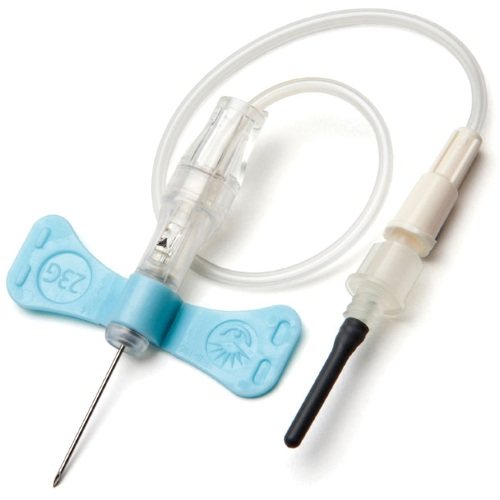
These include:
- the use of thinner needles requires precision and accuracy from the medical worker, since a triangular needle can damage tissue cells and red blood cells;
- blood flows through a thin cannula very slowly, which increases the duration of the process;
- If there is not enough material for analysis, you will have to repeat the blood sampling procedure.
At the moment, the butterfly needle is a modern and used method, despite the disadvantages.
A butterfly needle is one of the simple types of medical IV devices designed for thin venous vessels. The products are completely sterile and intended for single use.
Medical needles
There are three types :
- Puncture needle; A needle is needed to introduce or remove fluid from organs.
- Surgical needle; The needle is designed for sewing fabrics. Used in surgery, ophthalmology, microsurgery.
- Injection needle; Everyone has seen such a needle. It is used to suck out or introduce substances into the body. For example, anesthesia is carried out in any field of medicine, so the injection needle is one of the most common.
Butterfly needle (injection needle)

Few patients pay attention to the instruments with which doctors, for example, draw blood.
A clinical blood test is necessary for every person. With its help, we learn about the level of hemoglobin in the body, how many red blood cells, leukocytes, platelets are contained in the blood, and it is easier for the doctor to make a diagnosis if the analysis shows deviations from the norm.
A butterfly needle is used to draw blood from a vein.
Varieties of needle butterflies
There are two types:
1) Blood collection needle
Structure:
- Needle;
- Catheter;
- Luer adapter (connection) is convenient because it allows you to pour the substance more than once.
- Tube – Due to the flexibility of the tube, the needle does not move during blood sampling, which eliminates injury to the vessel.
- Wings – Helps secure the needle.
Needle size – 19mm. Needle diameter – 0.6 mm. Catheter length – 190 mm.
Purpose:
When drawing blood, a butterfly needle is used in any case, but it is indispensable when the patient is “difficult.” If blood is collected slowly and it is difficult to pierce a person’s skin, then such a needle is a way out of difficult situations. In addition, the “butterfly” is used when taking blood from people in a state of alcoholic intoxication, increased excitability, or neurosis.
2) IV needle
In order for the substance to penetrate the body faster, an intravenous injection is used.
Structure:
The components of the butterfly needle for internal injections are the same.
- The needle is laser sharpened.
- Catheter;
- Luer adapter (connection);
- A tube;
- Wings;
The differences are in the length of the tube, the diameter and the length of the needle. Tube length – 30 cm. External diameter: 0.8 mm. Needle length: 19 mm.
Purpose:
Used for infusion of medications into small veins of patients and animals.
Features of needle butterflies
- Stainless steel;
- Protective cap;
- Sharpening helps to insert the needle without injuring the skin and veins;
- The needle is covered with silicone - eliminates unpleasant sensations.
- The wings are painted in accordance with GOST;
- The “butterfly” is marked – Allows you not to make a mistake in choosing a needle.
- The kit includes a flexible, thin polyvinyl chloride tube;
Advantages of a butterfly needle
The needle is universal. Suitable for both young and old people. Another advantage is the ability to manipulate newborns and children of any age. The catheter is fixed, so even the most “noisy”, frightened patients will not be injured.
Instructions for collecting blood from a vein
To infuse a substance into a vein or draw blood, it is important to follow the instructions. For doctors, the postulate is the phrase “do no harm.”
- First you need to wash your hands and arm yourself with sanitizer, gloves and a mask;
- Then we fill the system and secure the bottle;
- We perform the usual manipulation before puncture: see if there is air in the valve;
- We carry out point 1.;
- Open the package;
- Place a cushion under the limb, apply a tourniquet (maximum 1 minute);
- Checking the pulse;
- We massage the site where the catheter is placed;
- Select the filled vein;
- We process the place;
- Then you need to connect the product to the system;
- After a drop of solution appears, the needle is placed with the cut side up and the wings are bent. The cap is no longer needed;
- Fix the vein;
- The puncture is performed at an angle of 10-15˚;
- We wait for the blood to appear;
- Afterwards the tourniquet must be relaxed;
- Open the clamp; Important! If there is no infiltration, then we do not remove the device from the vein.
- We fix the device with adhesive tape;
- We give recommendations to the patient;
We told you about the use of the butterfly needle, its features and types. We hope you found the information useful.
Action
A butterfly needle for an IV is a device that allows you to administer intravenous infusions or take fluid for analysis in patients in an unstable condition. The needle can also be used to work with children, and is often used when working with animals.
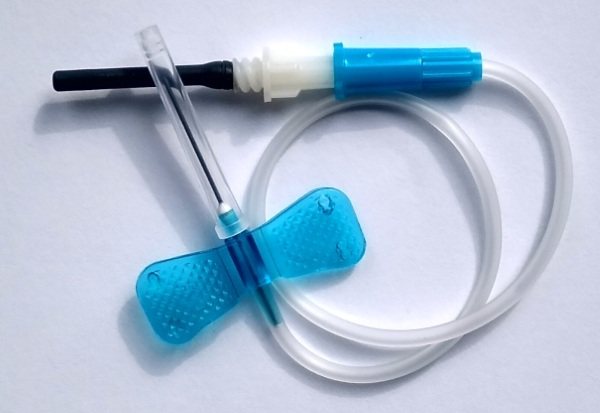
A butterfly needle for a dropper consists of a thin transparent tube about 30 cm long. This ensures greater atraumaticity when moving the patient or the system itself, and therefore reduces the risk of damage to the vein. At one end of the catheter there is a Luer or Luer-Lock connection, and at the other there is a thin surgical steel needle with a triangular sharpening.
Butterfly needles for droppers are divided into 8 sizes. The needles are sharpened on three sides, which ensures comfort for the patient when infusing drugs or drawing blood.
On the other side of the needle there is a silicone membrane that does not allow liquid to leak out. Flexible “wings” ensure reliable fixation of the needle in the patient’s vein, and a long tube allows you to move the dropper without harming the fixation of the needle.


